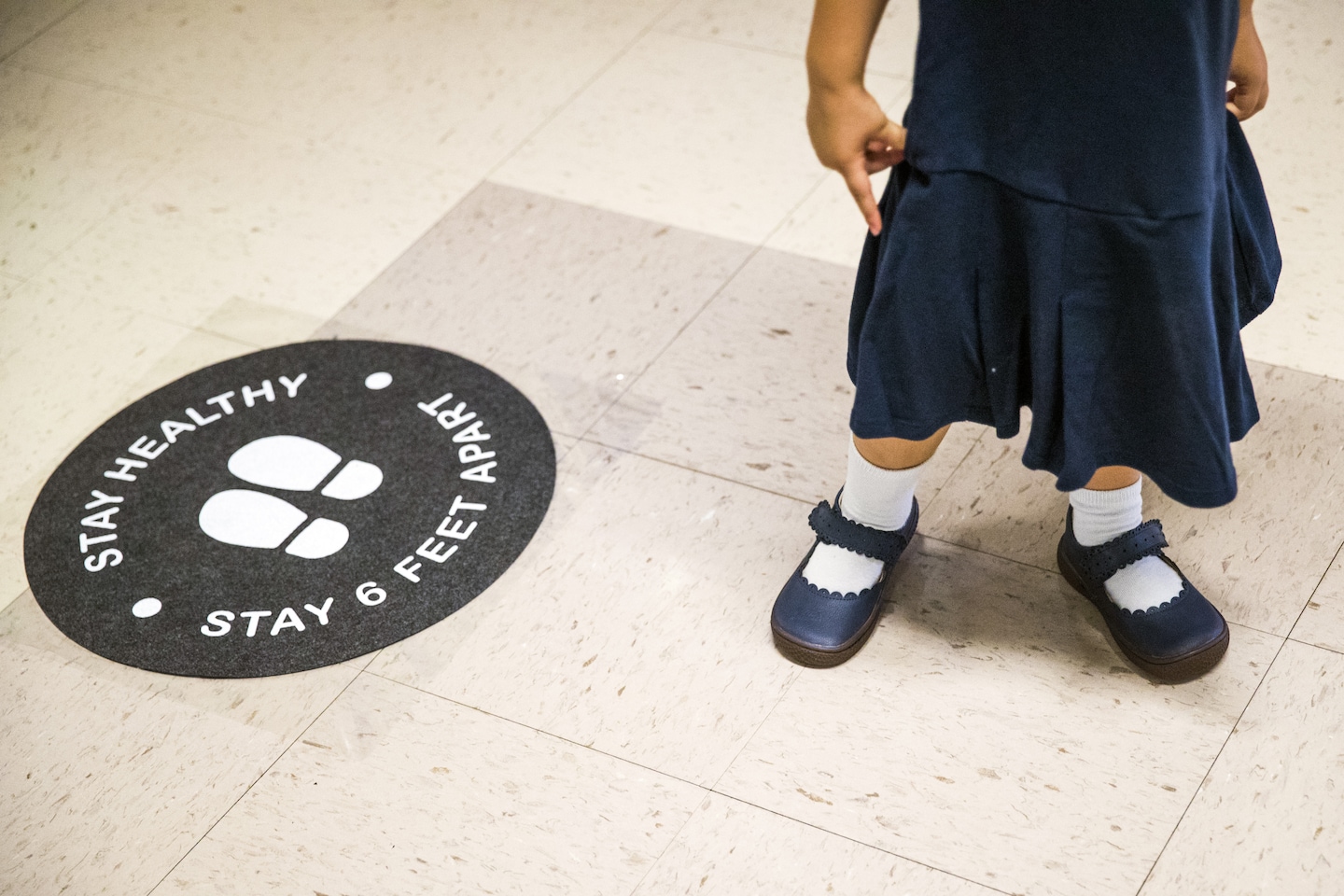Want to buy schools time? Open the windows.

During a recent Harvard forum, Anthony S. Fauci, director of the National Institute of Allergy and Infectious Diseases, answered a question on whether he supported healthy building strategies, such as enhanced ventilation and filtration.
Fauci had a simple response: “You’re telling me we have this big crisis, and you’re telling me to open up a window? Yes, I’m telling you to open up the window.”
Can it really be as easy as Fauci suggests? Just open the windows? Yes.
When someone coughs, sneezes or just breathes, he or she releases viral particles suspended in respiratory droplets into the air, ranging in size from infinitesimally small to large droplets that will settle out of the air due to gravity. It’s the smaller particles that matter in the context of ventilation, however, since they can stay aloft for hours and travel beyond the magical six-foot buffer between people that the government recommends.
Once viral particles are in the air, we have two options for removal: dilution through air ventilation or more air cleaning. But how much dilution is enough?
For classrooms, we recommend aiming for five air changes per hour (that is, the full volume of air in the room is changed or cleaned every 12 minutes), but the perfect cannot be the enemy of the good. The massive costs of keeping kids out of school, the lower risk profile of kids, and universal mask-wearing and other risk-reduction strategies mean we shouldn’t set a bright line for keeping kids out of school. Four air changes per hour of dilution plus cleaning is good, five is excellent, and six is ideal.
So, can opening windows help us reach this target?
We recently tested ventilation rates for nine classrooms in three buildings of different ages. Sure enough, as with most schools, the mechanical ventilation systems were bringing in only a fraction of the air required.
But when we opened windows, even just six inches, we consistently saw air-exchange rates above the “excellent” target of five air changes per hour, with some rooms getting much more. (The benefits of open windows extend to buses, too. When we measured air changes in a bus doing its regular route, we found the number of air changes per hour was 20 to 40!)
So, what can we do with this information? First, open windows and doors. It’s the simplest and quickest way to increase the air-exchange rates. But be mindful that the amount of air that comes inside will depend on outdoor winds and temperature gradients. Many schools that rely on natural ventilation have a central stack that draws air in and out, acting as a giant vacuum of sorts. They should make sure these are running. Adding a box fan or two in the windows might also help.
Opening windows is not a panacea and doesn’t mean we should not pursue other strategies. Buildings with mechanical systems should be set to the maximum amount of outdoor air possible, and schools should increase filtration to a MERV 13 filter or better on recirculated air. School officials should also be measuring flow rates and doing what they can to increase how much outdoor air comes inside.
If they can’t bring in enough outdoor air to hit the air-changes-per-hour target, they shouldn’t despair. There is always another way. Air cleaning through the use of portable air cleaners removes airborne viruses, providing four to six air changes on their own when sized correctly for the classroom. (Here’s a handy tool we developed with Shelly Miller, a mechanical engineering professor at the University of Colorado at Boulder, to help select the right-size cleaner.)
And remember, airborne transmission is not the only way to contract the virus; we still need to wear masks, wash our hands and distance as much as possible.
Opening windows sounds too simple to be true, as Fauci pointed out. But in this case, simplicity is elegant — grounded in science and risk-reduction principles. It’s science distilled to actionable measures. Hand-washing isn’t complicated either, but it works.
The window on opening schools is closing. Opening windows now, in the so-called shoulder season when weather is mild, can buy schools time to make the permanent and necessary upgrades to ventilation systems before winter arrives.
Watch Opinions videos:
Read more:






